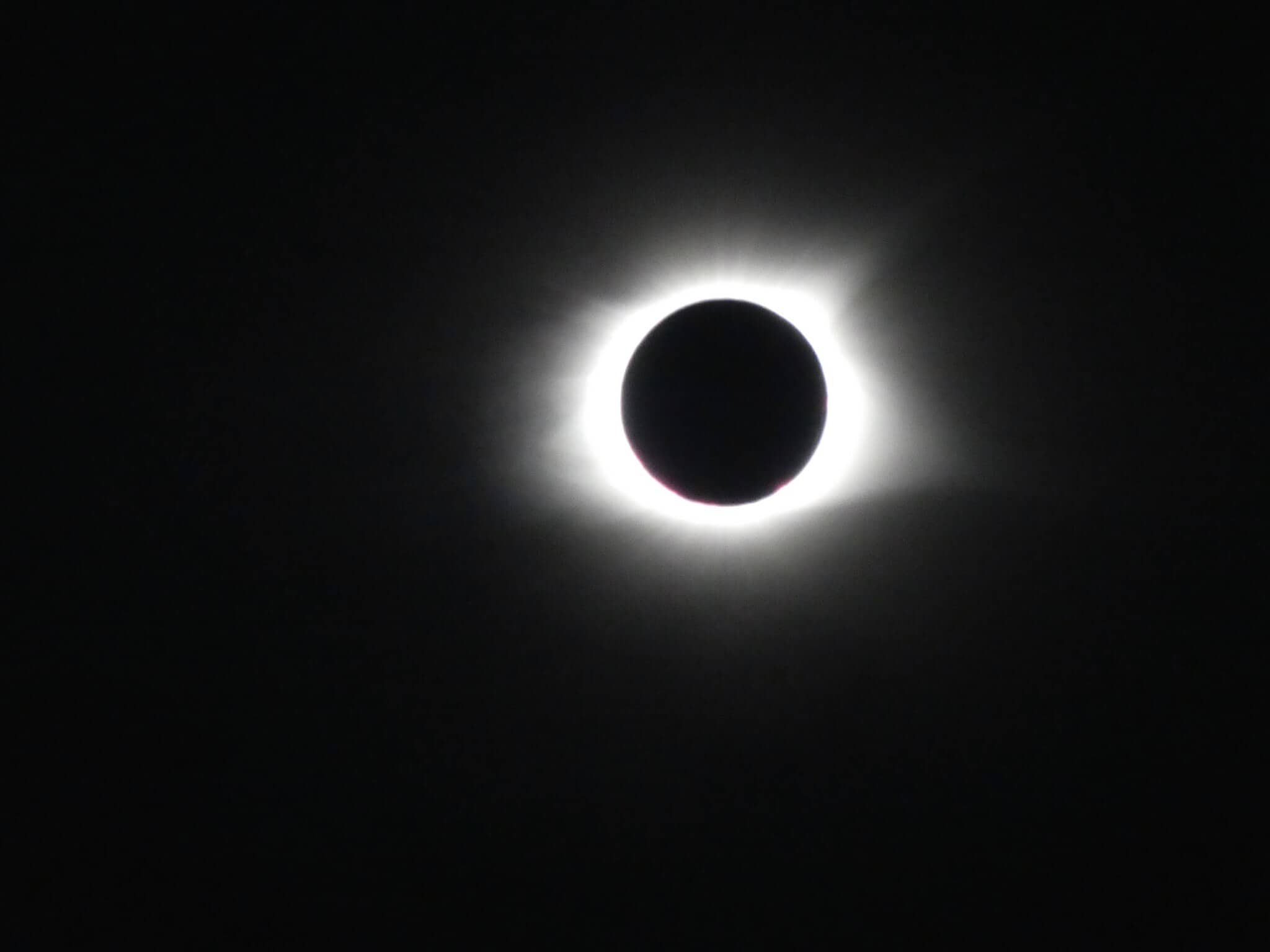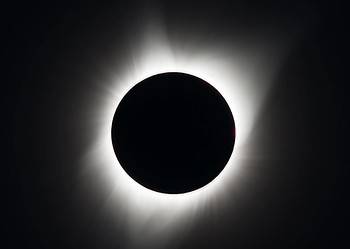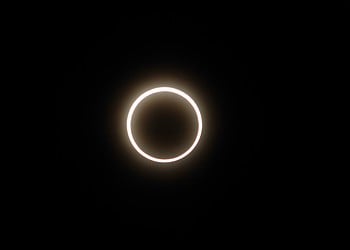
On April 8, 2024, the skies over the continental United States will darken midday as it witnesses the first total solar eclipse in seven years. This marks a significant occasion for communities along its path. The last total solar eclipse in the United States occurred on August 21, 2017. The next cross-country eclipse won’t happen until August 12, 2045.
The eclipse will reach a maximum totality—the total eclipse area—of four minutes and 28 seconds in Nazas, Mexico, before progressing across the U.S., where the durations of totality will vary. This year’s totality passes through 15 states, starting from Texas, and traversing through Oklahoma, Arkansas, Missouri, Illinois, Kentucky, Indiana, Ohio, Pennsylvania, New York, Vermont, New Hampshire, and Maine. After it passes through the U.S., the eclipse will cross into Canada, passing over southern Ontario, Quebec, New Brunswick, Prince Edward Island and Cape Breton in Nova Scotia.
A partial eclipse will be visible throughout all 48 continental states.
What’s an eclipse?
Understanding a solar eclipse begins with the alignment of the Sun, Moon, and Earth—a configuration known as syzygy. A solar eclipse occurs when the Moon moves between the Earth and Sun, casting a shadow on our planet. Those standing in the umbra, the shadow’s dark center, experience totality. Those outside the areas of totality but who still experience a partial eclipse are in the penumbra.
The recurrence of similar solar and lunar eclipses occurs approximately 18 years, 11 days, and 8 hours — a period known as a Saros cycle — and is an intriguing aspect of eclipse prediction. Despite these regular intervals, each totality experience is unique, offering sights such as the diamond ring effect, the ethereal glow of the Sun’s corona, and the dramatic change in daylight.
Observers might notice a drop in temperature and changes in animal behavior, which emphasize the eclipse’s impact on the natural world.
However, this Sun-Moon balance is not eternal. The slow drift of the Moon away from Earth means that, eventually, total solar eclipses will cease to occur.
How to watch the eclipse safely
While they are spectacular occurrences, when viewing solar eclipses, safety is paramount.
The Sun should not be viewed directly with the naked eye or through unfiltered optical devices such as binoculars or telescopes. The reason is stark and simple: just as a magnifying glass can focus sunlight to start a fire, the lens in your eye can concentrate solar rays onto your retina, causing irreversible damage or blindness. The retina does not have pain sensors, meaning the damage can occur without immediate realization, warranting extra care.
However, a total solar eclipse provides a brief window during totality, when the moon completely covers the sun, allowing for safe direct observation. This generally only lasts for three or four minutes. The moment totality ends, returning to using safe viewing methods is crucial. Put on your eclipse glasses as soon as the sun starts to reappear to avoid the risk of retinal damage.
Safe Viewing Equipment
Solar Viewing Glasses
Solar viewing glasses, or eclipse glasses, are a simple and affordable option for safely viewing a solar eclipse. These specialized glasses are designed to protect the eyes from harmful solar radiation.
You can tell if a pair of solar eclipse glasses meets today’s standards if they are labeled ISO 12312-2 (sometimes written as ISO 12312-2:2015).
However, caution is advised against purchasing these glasses from unverified sources, as counterfeit products may not provide adequate protection. Reliable vendors include Rainbow Symphony, American Paper Optics, and others recommended by the American Astronomical Society.
Common items like sunglasses or smoked glass are inadequate and dangerous.
Pinhole Projectors
For those preferring a DIY approach, a pinhole projector is a safe and effective way to observe a solar eclipse. This method involves projecting an image of the Sun through a pinhole onto a viewing surface, negating the risk to your eyes. Creating a pinhole projector requires simple materials like a long box or tube, aluminum foil, a pin, and a sheet of white paper. While not as direct as using solar viewing glasses, the resulting image provides a fascinating view of the eclipse in progress.
Telescope Viewing
Optical projection using binoculars and telescopes (used safely) are also options, though not as recommended. They can amplify the Sun’s image for a more magnified view. This requires very careful setup to avoid damage to the equipment or risk of fire. Additionally, if you do desire this direct observation, use professionally designed white light filters that block most sunlight.
Always, always, always ensure any filter used for direct viewing or attached to an optical device blocks 99.999 percent sunlight. Avoid using any eyepiece-mounted filters on telescopes, as they can crack under the Sun’s heat. Proper solar filters should be mounted at the front of the telescope.
Capturing that awesome shot
Capturing the spectacle on your camera requires caution and preparation, emphasized by a lesson from 2017 when photographer Sean MacDonald intentionally exposed a DSLR camera, equipped with a 400mm lens but no solar filter, to the Sun. Within moments, the camera began smoking, illustrating the dangers of pointing optical equipment at the Sun without proper protection. This experiment highlights the primary rule for eclipse photography: Never look directly at the sun through a camera without a solar filter.
The rarity of total solar eclipses makes them pretty priceless. Some individuals never witness one in their lifetime while others will endure insanely long car rides to catch a glimpse. Spending the entirety of an eclipse absorbed in camera settings or peering through a viewfinder can detract from the personal experience of the phenomenon. For many, it’s a moment to be savored with the naked eye (protected by eclipse glasses of course), as no photograph can substitute for the visceral experience of witnessing an eclipse firsthand.
Essential gear for eclipse photography
If you do want to capture that perfect Instagram shot though, make sure you have the following in your photography toolbox.
- Eclipse glasses: Essential for direct observation of the eclipse and for aligning your camera with the sun.
- Tripod: Vital for stability, especially during the dimmer totality phase of a solar eclipse when longer exposures are necessary.
- Remote shutter release: A remote trigger is advisable to avoid camera shaking during low light conditions.
- And of course, you need solar filters.
The Importance of Solar Filters
When photographing the Sun, especially outside the totality phase of a solar eclipse, a solar filter is indispensable to protect your camera and your eyes from intense sunlight, as shown by MacDonald. Unlike your general neutral density (ND) filters, solar filters are specifically designed to block harmful infrared and ultraviolet rays and reduce visible light intensity. Leading authorities like NASA, the American Astronomical Society, and major photography brands universally recommend solar filters over ND filters.
From Earth’s perspective, the apparent size of the Sun, like that of the Moon, requires significant magnification to fill a frame, suggesting the use of telephoto lenses exceeding 300mm in focal length. However, for capturing the sun’s corona during totality, excessively long focal lengths may unnecessarily crop out the beautiful outer regions of the corona. A range of 500mm to 1000mm is ideal for balancing detail and composition.
The rapid transition from daylight to twilight conditions of totality requires a versatile approach to camera settings, with a strong emphasis on exposure bracketing to capture the dynamic corona range. Setting your camera to its native ISO and adjusting shutter speed and aperture according to the eclipse phase is critical for achieving the desired exposure.
Witnessing a solar eclipse is a breathtaking experience. By employing the correct techniques and equipment, you can safely enjoy the gravitas of solar eclipses for years. So, however you choose to view it, be safe, and have fun!
















